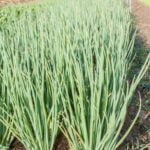Controlling fire ants in vegetable gardens is essential to maintain the health and productivity of your plants. These tiny insects can cause significant damage that can result in stunted growth, a decrease in crop yields, and even the loss of entire plants. In this article, we will explore the threat posed by fire ants in vegetable gardens and the steps you can take to control their population.
Fire ants are notorious for their aggressive behavior and painful stings. In addition to their unpleasant bite, these pests can wreak havoc on your vegetable garden. They feed on plant seeds, fruits, and other organic matter, leading to decreased plant vigor and poor crop development. Moreover, fire ant mounds can disrupt root systems, ultimately weakening plants’ ability to extract nutrients from the soil.
To effectively address the issue of fire ants in your vegetable garden, it is important first to identify these pests correctly. Fire ants have distinct physical characteristics such as reddish-brown bodies with darker abdomens. Additionally, they build large mounds that are easily visible in cultivated areas.
Understanding the behavior of fire ants is also crucial when it comes to implementing effective control measures. These insects are attracted to moist environments with ample food sources – both of which are commonly found in vegetable gardens. By gaining insight into their feeding habits and attraction factors, you can better protect your garden from infestations.
In the subsequent sections of this article, we will delve deeper into identifying fire ants and understanding their behavior while exploring various methods for controlling them naturally or chemically. Additionally, we will share valuable prevention techniques to help minimize the risk of a fire ant infestation altogether. With proper knowledge and proactive measures, you can ensure an ant-free vegetable garden that thrives throughout the growing season.
Identifying Fire Ants
Fire ants can cause significant damage to vegetable gardens, making it important for gardeners to be able to identify these pests. By recognizing the physical characteristics of fire ants and knowing how to locate their mounds, gardeners can take necessary action to control them and protect their plants.
Fire ants are generally reddish-brown in color, with a darker abdomen. They have a slender waist and are about 1/8 to 1/4 inch in length. One distinguishing characteristic of fire ants is their aggressive behavior when disturbed. They will quickly crawl up any object that comes into contact with their mound and sting repeatedly, causing painful welts or even allergic reactions in some people.
To identify fire ant mounds in vegetable gardens, gardeners should look for dome-shaped soil mounds that can reach up to 18 inches in height. These mounds are typically made up of fine soil particles and are usually found in sunny areas with minimal vegetation. A key indicator of fire ant activity is the presence of worker ants moving rapidly around the mound.
| Physical Characteristics | Description |
|---|---|
| Color | Reddish-brown with a darker abdomen |
| Size | About 1/8 to 1/4 inch in length |
| Behavior | Aggressive when disturbed, stinging repeatedly |
By being able to identify fire ants and locate their mounds, gardeners can take appropriate measures to control their population and minimize the damage they cause to vegetable plants.
Understanding the Behavior of Fire Ants
Fire ants are notorious for their aggressive behavior and ability to cause damage in vegetable gardens. Understanding why they attack vegetable gardens is crucial in developing effective control strategies.
Fire ants are omnivorous insects, meaning they feed on both plant material and other insects. In vegetable gardens, they are attracted to the abundance of food sources such as fruits, vegetables, and the insects that inhabit the garden. Fire ants have a voracious appetite and can quickly devour young seedlings or damage the roots of mature plants, leading to stunted growth or death.
In addition to food availability, fire ants are also attracted to the warm and moist environment commonly found in vegetable gardens. These conditions provide an ideal habitat for fire ant colonies to thrive and expand their populations. The loose soil structure in vegetable gardens is easily excavated by fire ants, allowing them to build extensive underground tunnels and mound systems.
When fire ant mounds are disturbed or threatened by human activities or machinery, the workers respond aggressively by swarming out of the nest. These aggressive behaviors include biting and stinging in defense of their colony. When fire ants attack vegetable plants, they inject venom into them through their painful sting. The venom can induce allergic reactions in some individuals and may cause further damage to the plants.
To effectively control fire ants in vegetable gardens, it is important to understand their behavior and motivations. By implementing preventative measures such as maintaining good garden hygiene, removing attractants like decaying organic matter or damp areas where they could potentially build nests, gardeners can minimize the risk of fire ant infestation.
Additionally, regular monitoring for early signs of fire ant activity will allow for immediate intervention using natural methods or chemical insecticides if necessary. By addressing these issues proactively, gardeners can protect their vegetables from potential damage caused by fire ants and enjoy a healthy harvest.
The Impact of Fire Ants on Vegetable Gardens
The presence of fire ants in vegetable gardens can have a significant impact on the health and productivity of your plants. These invasive pests are known for causing various damages that can lead to stunted growth, reduced yields, and even plant death. It is important to understand the specific damages that fire ants can inflict on your vegetable plants in order to take appropriate control measures.
Here are some common plant damages caused by fire ants:
- Damage to Roots: Fire ants are notorious for tunneling through the soil and creating intricate networks of underground tunnels. This activity can cause significant damage to the roots of your vegetable plants. As a result, the plants may become weakened, leading to stunted growth or even death.
- Plant Diseases: Fire ants are not only destructive physically but they can also contribute to the spread of plant diseases. When fire ants feed on wounded or damaged plant tissues, they create openings for pathogens to enter and infect the plants. This can lead to diseases such as bacterial leaf spot, fungal infections, and root rot.
- Disrupted Pollination: Some vegetable plants rely on pollinators like bees and butterflies for successful fruit production. However, fire ant activity in the garden can disrupt this process by attacking and killing pollinators or by disturbing them enough to discourage their visits. Without proper pollination, your vegetable garden may suffer from reduced yields or deformed fruits.
To ensure a healthy and thriving vegetable garden, it is essential to implement effective fire ant control measures. By addressing these common plant damages caused by fire ants through appropriate methods outlined in this article (such as organic options or chemical insecticides), you can protect your vegetable plants from these intrusive pests and enjoy an ant-free garden all season long.
Natural Methods of Controlling Fire Ants in Vegetable Gardens
Using Organic Pest Control Products
One effective and natural method of controlling fire ants in vegetable gardens is by using organic pest control products. One such product is diatomaceous earth (DE), which is made from fossilized remains of tiny aquatic organisms called diatoms. DE works by dehydrating the exoskeleton of the fire ants, ultimately killing them. To use this method, simply sprinkle the DE around the fire ant mounds in your vegetable garden and reapply after rain or irrigation.
Another natural option for fire ant control is beneficial nematodes. These microscopic worms seek out and parasitize fire ant larvae, effectively reducing their population. Beneficial nematodes are harmless to humans, plants, and other beneficial insects present in your vegetable garden. It is recommended to apply the nematodes in the early morning or late evening when temperatures are cooler to ensure their effectiveness.
Encouraging Natural Predators
Another way to naturally control fire ants in vegetable gardens is by encouraging natural predators that feed on them. Anteaters, birds like woodpeckers and quail, as well as certain snake species are known to prey on fire ants. To attract these natural predators, consider providing suitable habitats such as birdhouses or woodpiles for birds and snakes to nest or hide.
Additionally, you can create habitat friendly to predatory insects like ants’ natural enemies – ladybugs and lacewings – which feed on fire ant eggs and larvae. Planting flowers that attract these beneficial insects, such as daisies or marigolds, can help reduce the fire ant population naturally.
Maintenance Practices
Implementing proper maintenance practices for your vegetable garden can also contribute to controlling fire ants naturally. Keeping your garden free from debris or excess vegetation will discourage fire ants from establishing colonies. Regularly removing fallen leaves, grass clippings, and other organic matter will eliminate potential hiding places and nesting sites for fire ants.
Furthermore, practicing proper irrigation techniques can indirectly control fire ants. By not overwatering your vegetable garden, you will minimize moist conditions that attract fire ants. Similarly, not leaving standing water in the garden will discourage their presence.
By utilizing these natural methods of controlling fire ants in your vegetable garden, you can ensure a healthier and more productive growing environment without relying on harmful chemical pesticides.
Chemical Solutions for Fire Ant Control
Explaining the Use of Chemical Insecticides
When it comes to controlling fire ants in vegetable gardens, sometimes a stronger approach is needed. This is where chemical insecticides come into play. Chemical solutions can be highly effective in eradicating fire ant colonies and preventing further infestations. However, it is important to use these tools responsibly and with caution.
Chemical insecticides specifically formulated for fire ant control are available in various forms such as granules, dusts, liquid concentrates, or baits. These products typically contain active ingredients that target and eliminate fire ants at different stages of their life cycle. It is crucial to read and follow the instructions on the product label carefully to ensure safe and effective use.
Guidelines on Selecting and Applying Chemical Treatments
When selecting a chemical insecticide for fire ant control, consider factors such as the size of your garden, severity of infestation, and potential impact on beneficial insects. Look for products that are labeled specifically for vegetable gardens and fire ant control.
Before applying any chemical treatment, it is important to identify the active ingredient(s) contained within the product. This information will help you determine if the product is suitable for your specific situation and if any precautions need to be taken when applying it in a vegetable garden.
When applying chemical insecticides, follow these guidelines:
- Wear protective clothing such as gloves, long sleeves, pants, and closed-toe shoes.
- Avoid applying treatments on windy days to prevent drift onto vegetables or surrounding areas.
- Apply chemicals according to label instructions regarding dosage rates and reapplication intervals.
- Keep children and pets away from treated areas until the product has dried or as specified on the label.
- Dispose of empty containers properly according to local regulations.
It is important to note that while chemical insecticides can provide effective fire ant control in vegetable gardens, they should be used as a last resort after considering natural methods and prevention techniques. Integrated pest management, which combines both chemical and non-chemical approaches, is often the most sustainable and efficient way of managing fire ant infestations.
Remember to always handle and store chemical products safely, following the instructions provided by the manufacturer.
Prevention Techniques
Fire ants can be a major nuisance in vegetable gardens, but there are several prevention techniques that can help minimize the risk of infestation. By implementing these strategies, gardeners can create an environment that is unattractive to fire ants and reduce the likelihood of their presence in the garden.
Firstly, it is important to practice good garden maintenance as a preventive measure against fire ant infestation. Regularly removing any debris, such as fallen leaves or decaying plant matter, will eliminate potential nesting sites for fire ants. Additionally, keeping the garden tidy and free from weeds will create less favorable conditions for fire ants to establish their colonies.
Another effective strategy is to remove any attractants that may entice fire ants into the garden. This includes limiting sources of food and water that might draw them in. It is essential to promptly harvest ripe fruits and vegetables as they become available and ensure that fallen produce is quickly removed from the garden area. Keeping irrigation systems well-maintained to prevent standing water is also crucial in minimizing the risk of attracting fire ants.
Implementing physical barriers can also be an effective preventive measure against fire ant infestation. These barriers can include mulch or gravel strips around the perimeter of the garden beds, which act as deterrents by making it difficult for fire ants to access the plants. Additionally, placing sticky traps near ant trails or mounds can help capture wandering workers and disrupt their colony’s activity.
By following these prevention techniques, gardeners can significantly reduce their risk of a fire ant infestation in their vegetable gardens. Taking proactive measures to discourage fire ants from taking up residence in your garden will not only protect your plants from damage but also create a more enjoyable gardening experience overall.
- Regularly remove debris and maintain a tidy garden.
- Harvest ripe fruits and vegetables promptly.
- Remove fallen produce.
- Maintain irrigation systems properly.
- Use physical barriers such as mulch or gravel strips.
- Place sticky traps near ant trails or mounds.
Conclusion
In conclusion, fire ants can pose a significant threat to vegetable gardens, causing damage to plants and hindering growth. It is crucial for gardeners to understand the behavior and characteristics of fire ants in order to effectively control and prevent infestations in their gardens.
Identifying fire ant mounds in the garden is essential for early detection. By recognizing the enemy, gardeners can take immediate action and implement appropriate control measures. Additionally, understanding the feeding habits and reasons why fire ants are attracted to vegetable gardens can further aid in prevention.
Fortunately, there are both natural and chemical methods available for controlling fire ants in vegetable gardens. Organic options such as diatomaceous earth or beneficial nematodes provide effective alternatives that do not harm the environment or pose risks to human health. On the other hand, chemical insecticides can also be considered as a stronger tool for tackling severe infestations.
Prevention techniques should also be implemented to minimize the risk of fire ant infestation in vegetable gardens. These may include improving garden maintenance, removing attractants, and practicing good sanitation practices.
By implementing these control measures and prevention techniques, gardeners can enjoy an ant-free vegetable garden that thrives with healthy plants. It is important to prioritize fire ant control to ensure the success of your vegetable crops and maintain a beautiful and productive garden.
Frequently Asked Questions
How do I keep fire ants out of my vegetable garden?
To keep fire ants out of your vegetable garden, there are a few strategies you can employ. First, maintain good garden hygiene by keeping the area free from debris, as fire ants tend to build their nests in undisturbed areas. Regularly weed and remove any brush or piles of organic matter that may serve as potential nesting sites for the ants.
Secondly, consider creating physical barriers around your garden, such as installing a fence or using landscaping fabric to prevent them from entering. Additionally, applying a layer of diatomaceous earth around the perimeter can also act as a deterrent since it creates an abrasive barrier that is difficult for the ants to cross.
What fire ant killer is safe for vegetable gardens?
When it comes to using fire ant killers in a vegetable garden, it is crucial to prioritize safety for yourself and the environment. Opt for products that are specifically labeled as safe for use in vegetable gardens or around edible plants.
Most commonly, organic insecticides with active ingredients such as spinosad or d-limonene can be effective against fire ants without posing significant risks to humans or the ecosystem when used according to label instructions. Remember to always read and follow the product’s directions carefully, especially regarding application rates and timing.
How do I get rid of fire ants permanently?
Getting rid of fire ants permanently can be challenging since these pests have resilient colonies and often relocate if they sense danger or disturbance. However, a few approaches can help manage their populations effectively. One method involves directly treating individual mounds with an appropriate insecticide labeled for fire ant control. This approach targets specific mounds rather than broadcast application over large areas.
Another option is baiting, which involves using specially formulated granular baits that are attractive to fire ants but contain slow-acting toxins which are spread throughout the colony after ingestion by worker ants, eventually causing colony collapse if applied correctly over time. Regular monitoring and retreatment may be necessary even after successful initial control measures since new colonies can still establish themselves nearby. Ongoing vigilance is crucial to managing fire ant populations in the long term.

If you’re looking to get into vegetable gardening, or are just looking for some tips on how to make your current garden better, then you’ve come to the right place! My name is Ethel and I have been gardening for years. In this blog, I’m going to share with you some of my best tips on how to create a successful vegetable garden.





